Real-Time Flood Warning System Application
Abstract
:1. Introduction
2. Materials and Methods
2.1. Study Area Description
2.2. Data Required and Collection
2.3. Flood Forecasting Model Reference to the Previous Study
2.4. The Principle of Physical Real-Time Correction and Modifications in the Present Study for Flood Level Forecasting
- (a)
- first, add up the rainfall forecast data (, ) of head and tail (t = 0 and t = 1) and divide by two as the data at one time,
- (b)
- add up every 10 min of rainfall forecast data between t = 0 and t = 1 i.e., (, , , , ), and divided by 6 to obtain the QPF input value () at time step t = 0.
3. Results and Discussion
Comparison of Flow before and after RT Correction
4. Conclusions
Supplementary Materials
Author Contributions
Funding
Institutional Review Board Statement
Informed Consent Statement
Data Availability Statement
Acknowledgments
Conflicts of Interest
References
- WMO. Manual on Flood Forecasting and Warning; WMO No. 1072; World Meteorological Organization: Geneva, Switzerland, 2011. [Google Scholar]
- Jain, S.K.; Mani, P.; Jain, S.K.; Prakash, P.; Singh, V.P.; Tullos, D.; Kumar, S.; Agarwal, S.P.; Dimri, A.P.A. Brief review of flood forecasting techniques and their applications. Int. J. River Basin Manag. 2018, 16, 329–344. [Google Scholar] [CrossRef]
- Corral, C.; Sempere-Torres, D.; Revilla, M.; Berenguer, M. A semi-distributed hydrological model using rainfall estimates by radar: Application to Mediterranean basins. Phys. Chem. Earth B 2000, 25, 1133–1136. [Google Scholar] [CrossRef]
- Borga, M.; Degli Esposti, S.; Norbiato, D. Influence of errors in radar rainfall estimates on hydrological modeling prediction uncertainty. Water Resour. Res. 2006, 42, W08409. [Google Scholar] [CrossRef] [Green Version]
- Cole, S.J.; Moore, R.J. Hydrological modelling using raingauge- and radar-based estimators of areal rainfall. J. Hydrol. 2008, 358, 159–181. [Google Scholar] [CrossRef]
- Chiang, Y.M.; Chang, F.C. Integrating hydrometeorological information for rainfall-runoff modelling by artificial neural networks. Hydrol. Process. 2009, 23, 1650–1659. [Google Scholar] [CrossRef]
- Lin, G.F.; Chou, Y.C.; Wu, M.C. Typhoon flood forecasting using integrated two-stage support vector machine approach. J. Hydrol. 2013, 486, 334–342. [Google Scholar] [CrossRef]
- Yu, P.S.; Yang, T.C.; Chen, S.Y.; Kuo, C.M.; Tseng, H.W. Comparison of random forests and support vector machine for real-time radar-derived rainfall forecasting. J. Hydrol. 2017, 552, 92–104. [Google Scholar] [CrossRef]
- Liu, Y.; Gupta, H.V. Uncertainty in hydrologic modeling: Toward an integrated data assimilation framework. Water Resour. Res. 2007, 43, W07401. [Google Scholar] [CrossRef]
- Hostache, R.; Matgen, P.; Montanari, A.; Montanari, M.; Hoffmann, L.; Pfister, L. Propagation of uncertainty in coupled hydro-meteorological forecasting system: A stochastic approach for the assessment of the total predictive uncertainty. Atmos. Res. 2010, 100, 263–274. [Google Scholar] [CrossRef]
- Wu, S.-J.; Lien, H.-C.; Chang, C.-H.; Shen, J.-C. Real-time correction of water stage forecast during rainstorm events using combination of forecast errors. Stoch. Environ. Res. Risk Assess. 2012, 26, 519–531. [Google Scholar] [CrossRef]
- Wu, M.C.; Lin, G.F. The very short-term rainfall forecasting for a mountainous watershed by means of an ensemble numerical weather prediction system in Taiwan. J. Hydrol. 2017, 546, 60–70. [Google Scholar] [CrossRef]
- Hussain, F.; Wu, R.S.; Wang, J.X. Comparative study of very short-term flood forecasting using physics-based numerical model and data-driven prediction model. Nat. Hazards 2021, 107, 249–284. [Google Scholar] [CrossRef]
- Lohani, A.K.; Goel, N.; Bhatia, K. Improving real time flood forecasting using fuzzy inference system. J. Hydrol. 2014, 509, 25–41. [Google Scholar] [CrossRef]
- Wu, R.S.; Shih, D.S. Modeling hydrological impacts of groundwater level in the context of climate and land cover change. Terr. Atmos. Ocean. Sci. 2018, 29, 341–353. [Google Scholar] [CrossRef] [Green Version]
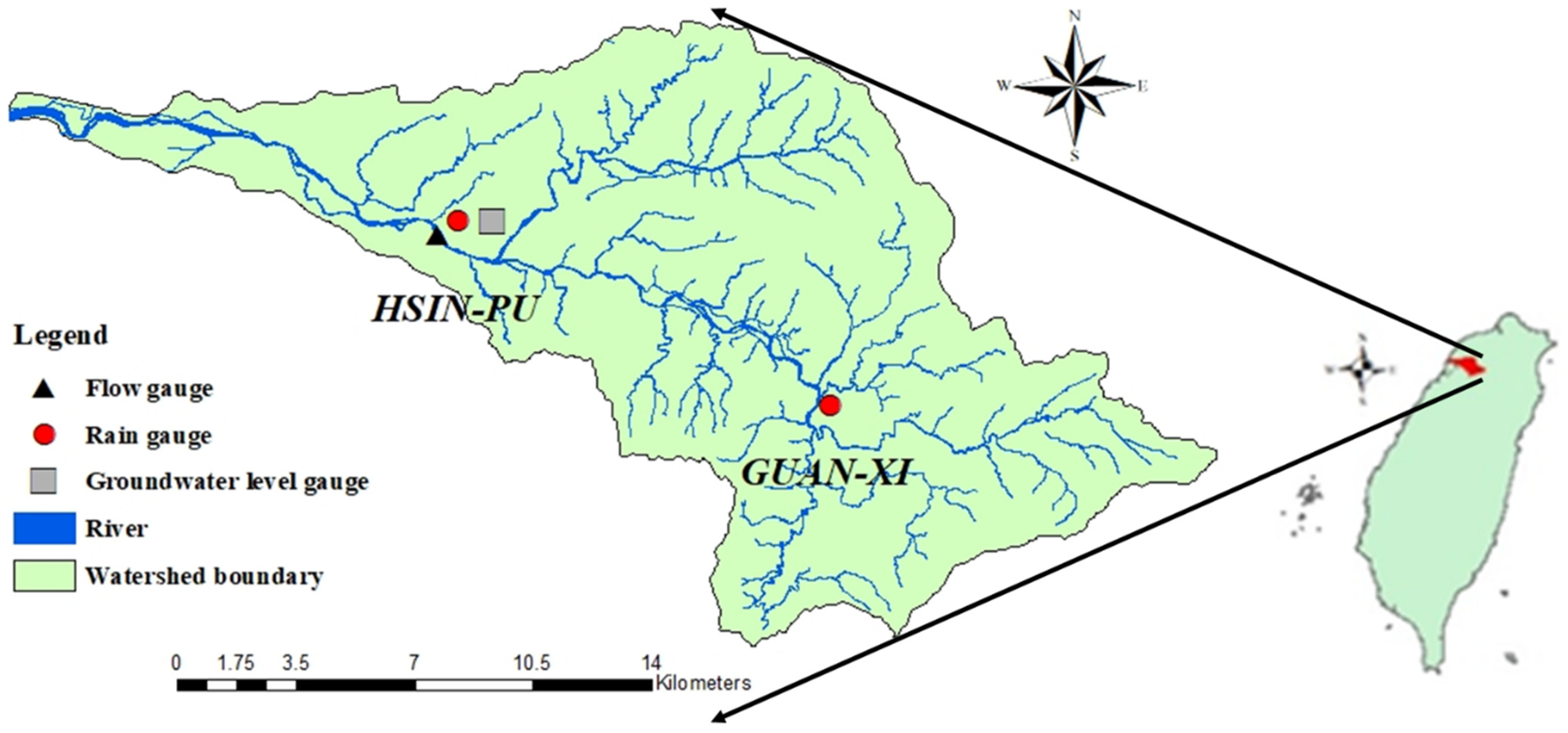
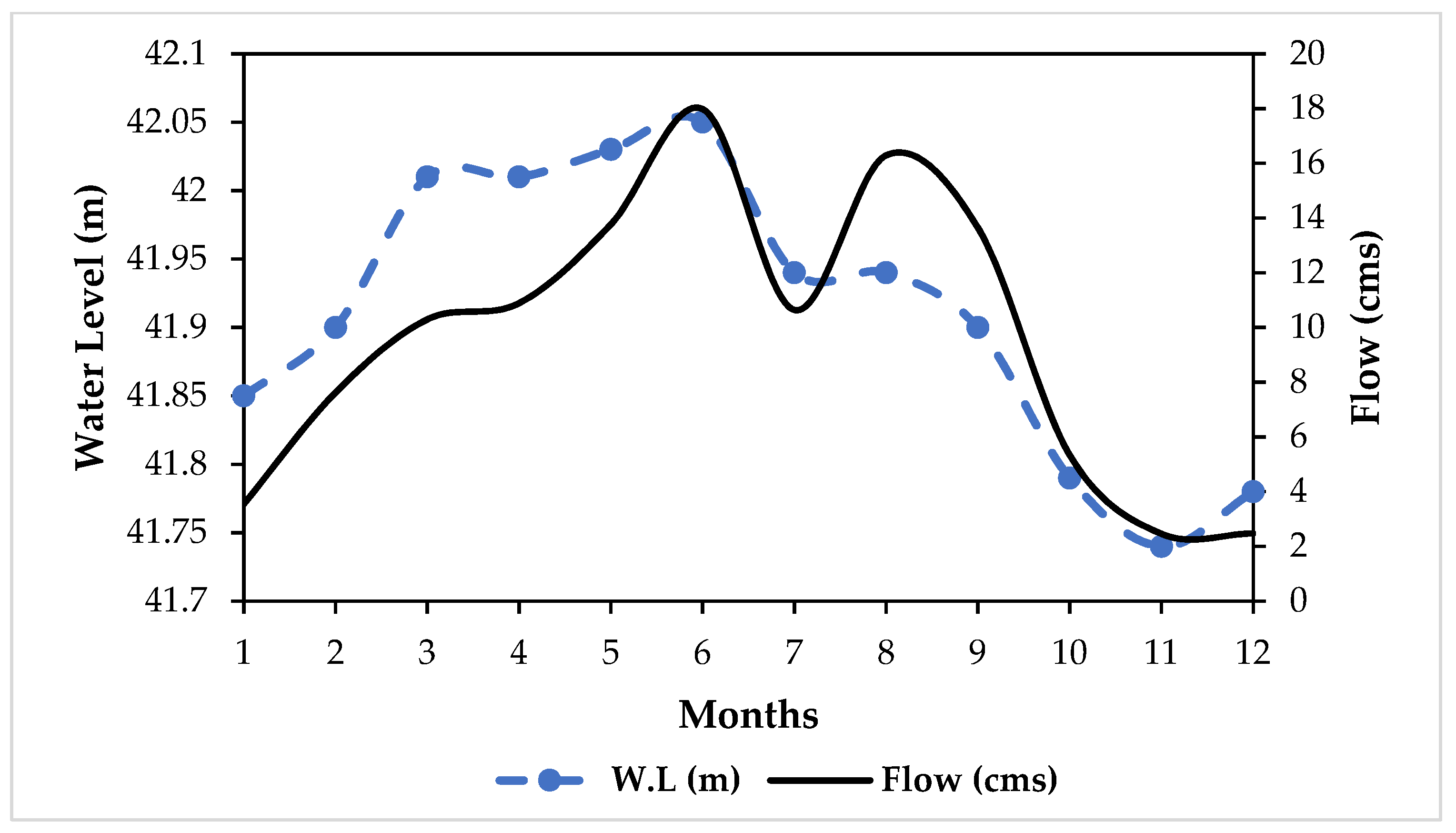
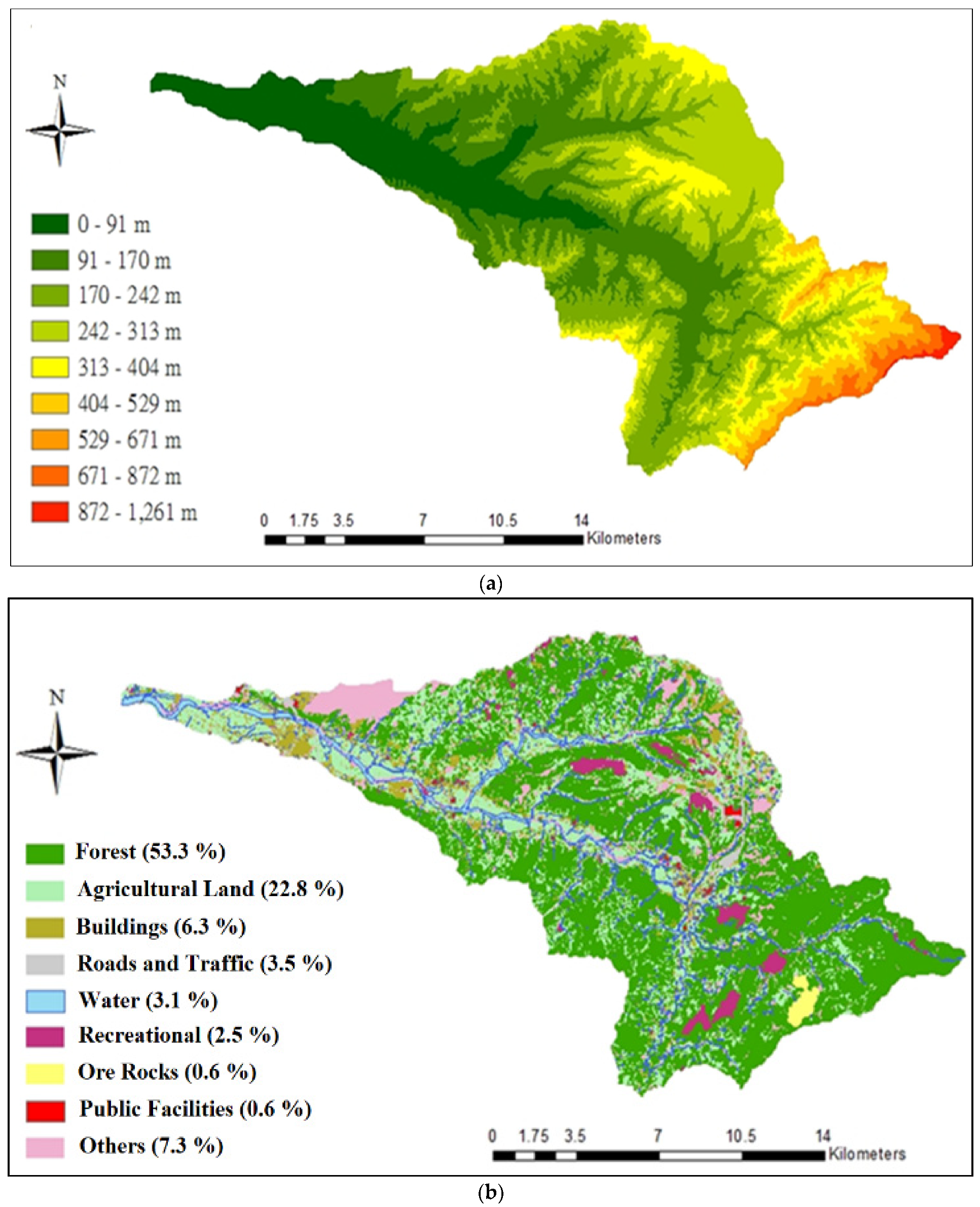
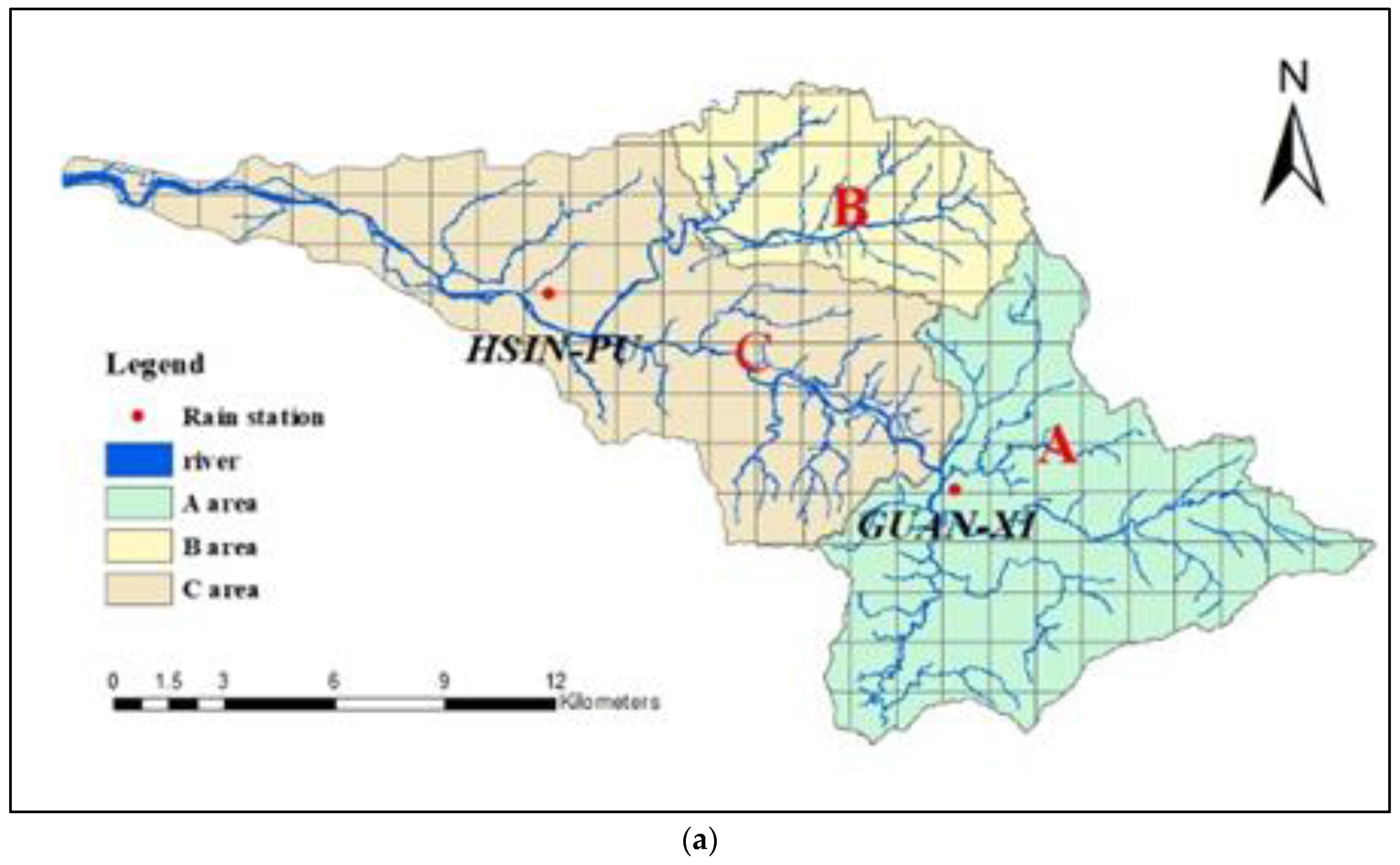
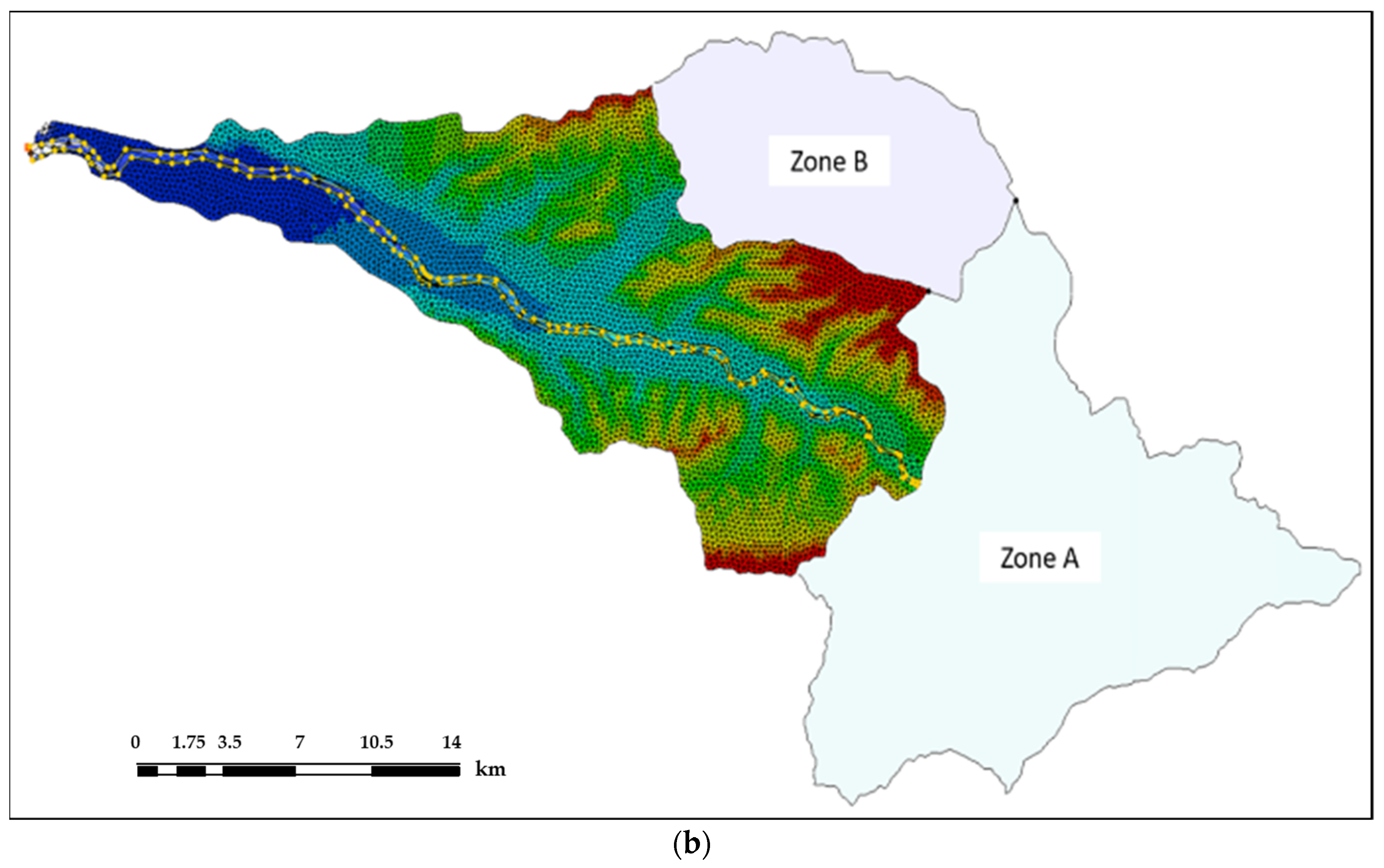
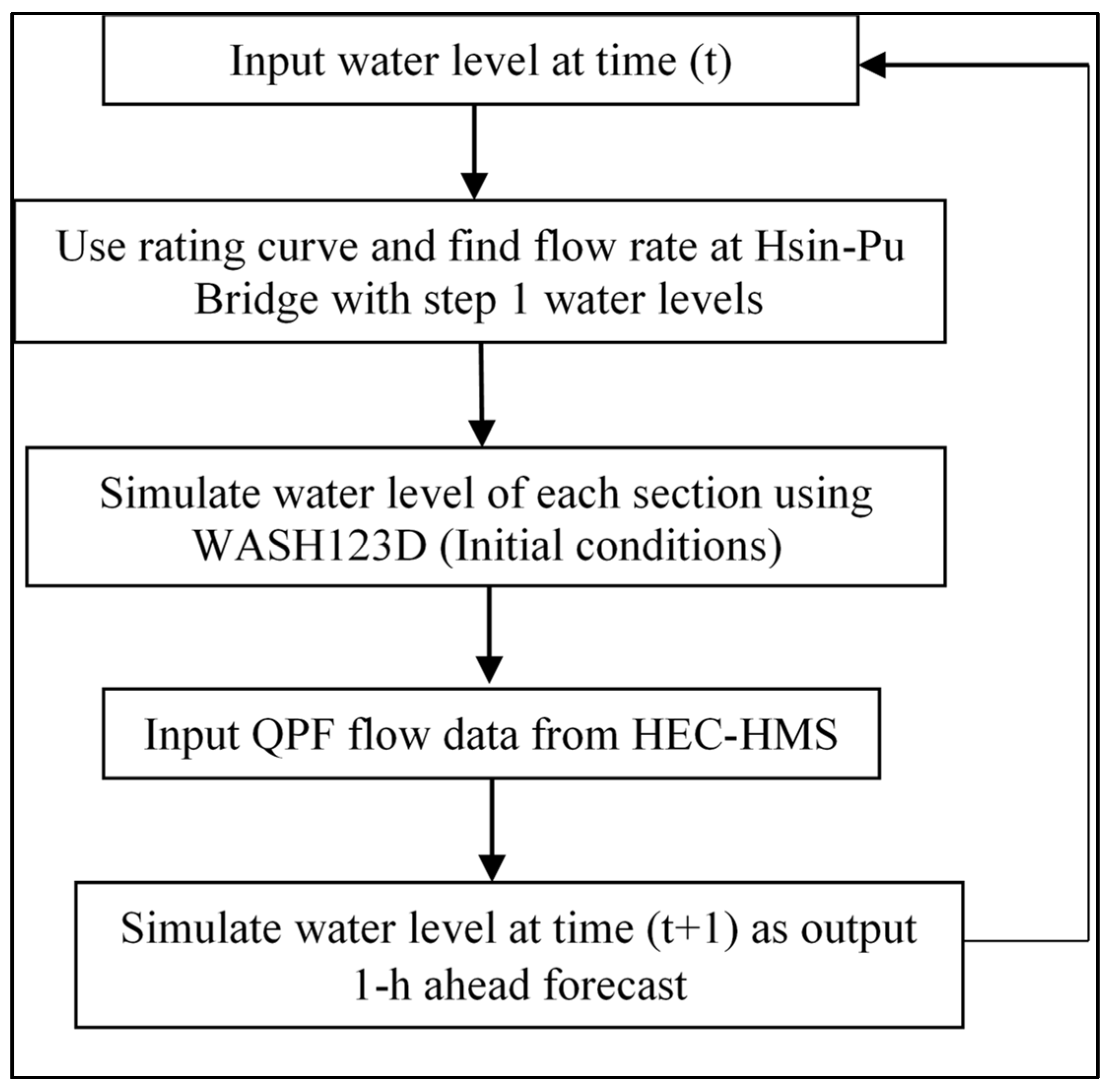

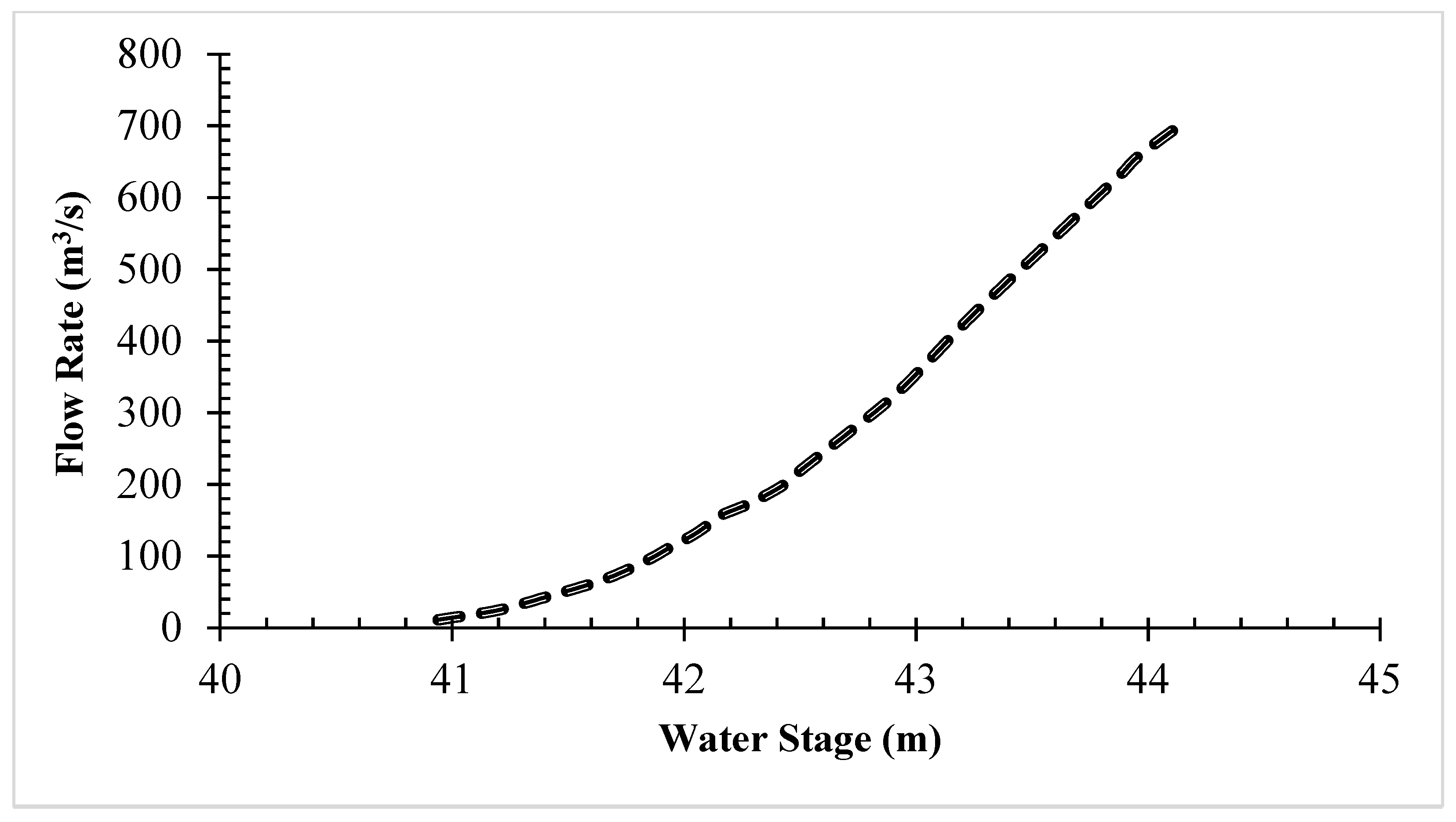
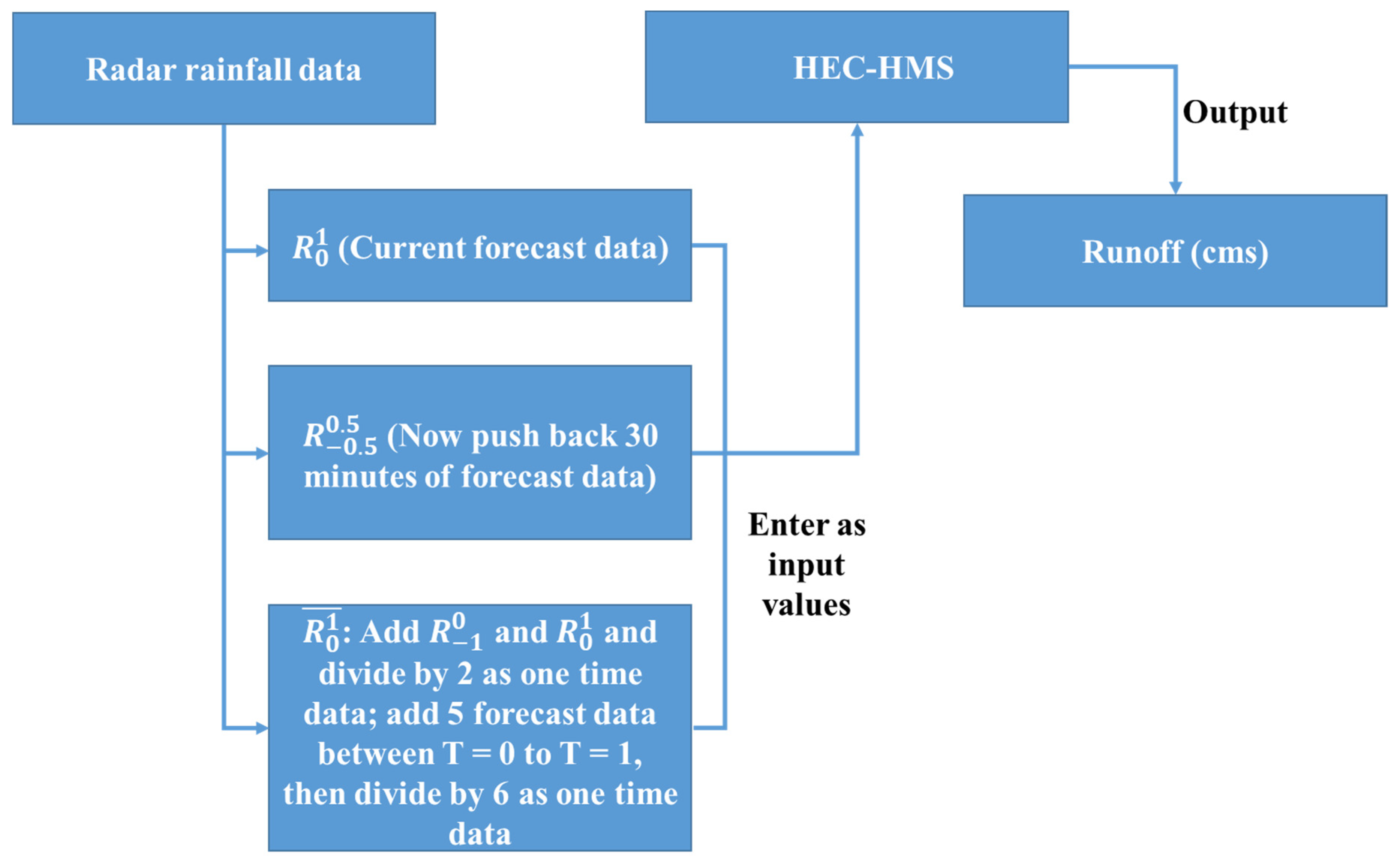
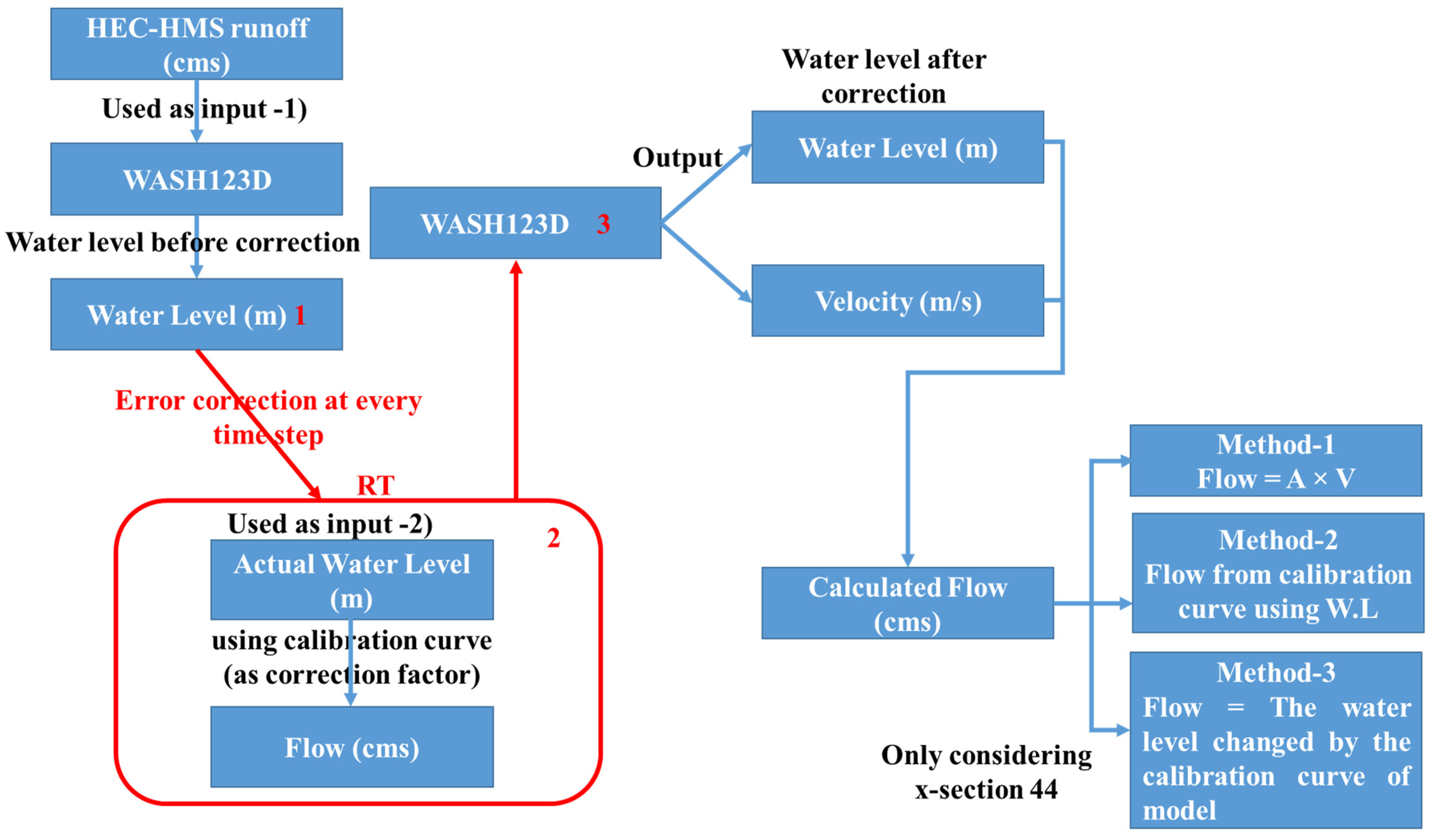
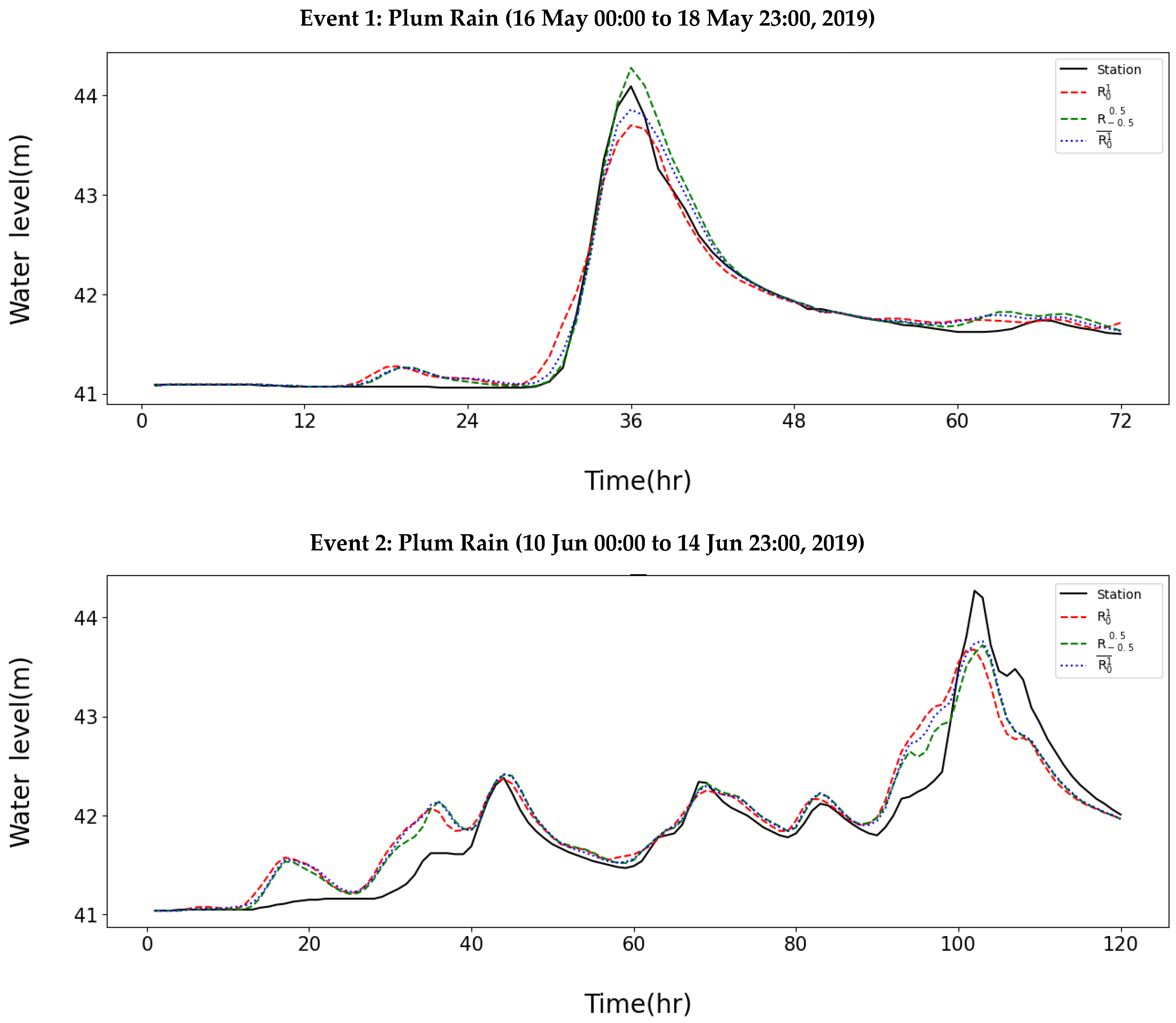
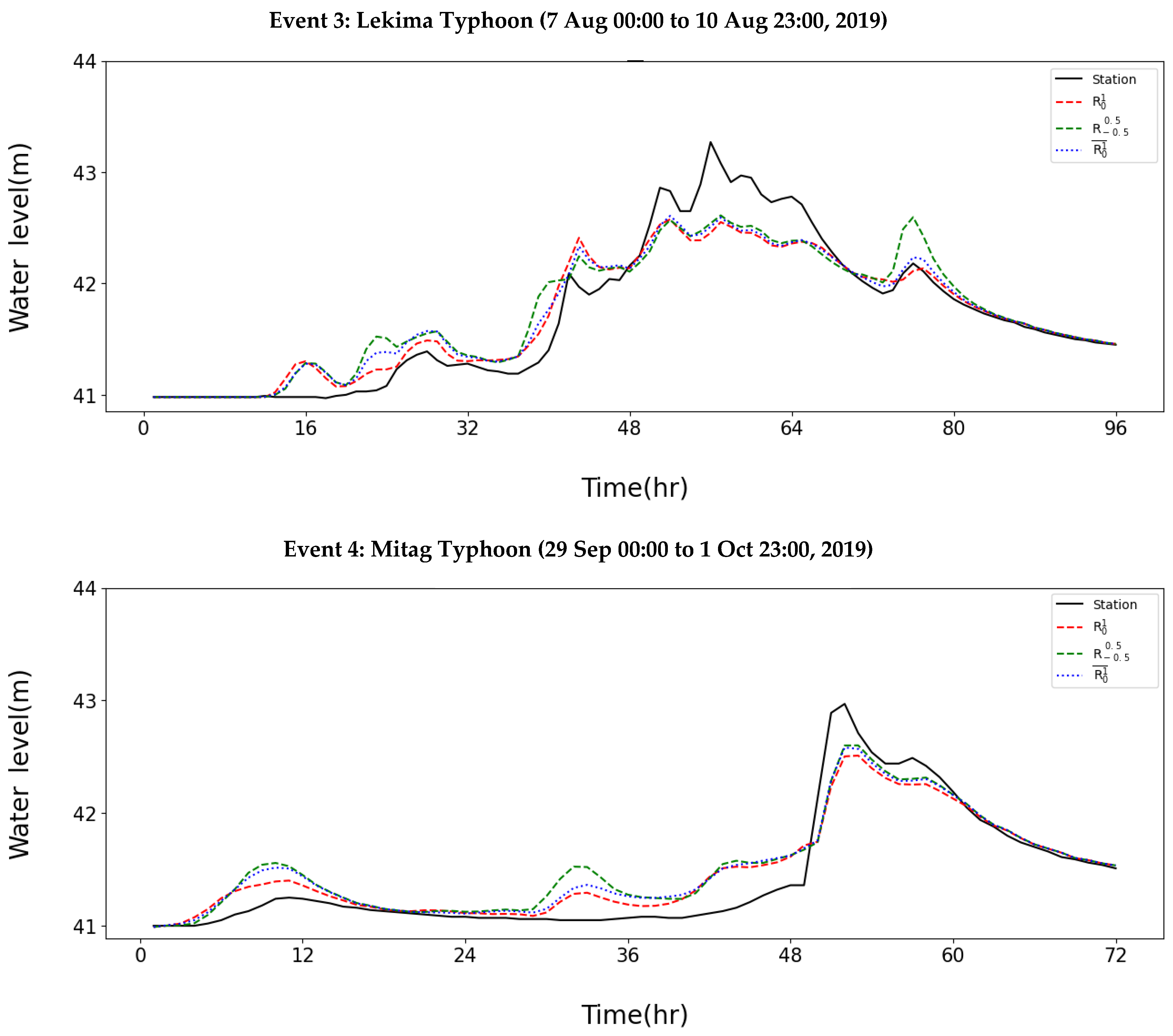
| Event | Occurrence Date (Taipei Time) | Duration (h) | Total Rainfall (mm) | Maximum Water Level (m) |
|---|---|---|---|---|
| Plum Rain | 16 May 0:00 to 18 May 23:00, 2019 | 72 | 137 | 44.09 |
| Plum Rain | 10 Jun 00:00 to 14 Jun 23:00, 2019 | 120 | 276 | 44.27 |
| Lekima | 7 Aug 00:00 to 10 Aug 23:00, 2019 | 96 | 198 | 43.27 |
| Mitag | 29 Sep 00:00 to 1 Oct 23:00, 2019 | 72 | 99 | 42.97 |
| Statistical Parameters | Direct Simulation | Real-Time Correction | ||||||
|---|---|---|---|---|---|---|---|---|
| Event 1 | Event 2 | Event 3 | Event 4 | Event 1 | Event 2 | Event 3 | Event 4 | |
| Method 1 | ||||||||
| CC | 0.85 | 0.65 | 0.69 | 0.41 | 0.99 | 0.93 | 0.96 | 0.96 |
| RMSE (m) | 0.54 | 0.57 | 0.58 | 0.51 | 0.12 | 0.28 | 0.21 | 0.18 |
| PE (m) | −0.65 | −0.83 | −0.95 | −0.93 | −0.39 | −0.59 | −0.69 | −0.46 |
| ETp (h) | 0 | −2 | −14 | −1 | 0 | 0 | −4 | 1 |
| Method 2 | ||||||||
| CC | 0.91 | 0.74 | 0.63 | 0.41 | 0.99 | 0.96 | 0.94 | 0.94 |
| RMSE (m) | 0.45 | 0.5 | 0.58 | 0.52 | 0.11 | 0.23 | 0.24 | 0.21 |
| PE (m) | 0.01 | −0.8 | −0.42 | −0.82 | 0.19 | −0.55 | −0.66 | −0.37 |
| ETp (h) | 0 | 1 | 20 | 0 | 0 | 1 | 1 | 1 |
| Method 3 | ||||||||
| CC | 0.9 | 0.73 | 0.68 | 0.44 | 0.99 | 0.95 | 0.96 | 0.96 |
| RMSE (m) | 0.45 | 0.51 | 0.56 | 0.5 | 0.09 | 0.25 | 0.21 | 0.19 |
| PE (m) | −0.39 | −0.76 | −0.97 | −0.84 | −0.23 | −0.5 | −0.66 | −0.39 |
| ETp (h) | 0 | 1 | 20 | 0 | 0 | 1 | −4 | 0 |
| Event | Rainfall Duration (h) | Direct Simulated Flow Rate (m3/h) before RT | Real-Time Correction of Flow Rate (m3/h) after RT | Difference between before and after RT (m3/h) | Percentage Difference |
|---|---|---|---|---|---|
| 1 | 72 | 7.46 × 104 | 7.48 × 104 | 196.63 | 0.26% |
| 2 | 120 | 7.78 × 104 | 7.80 × 104 | 145.61 | 0.19% |
| 3 | 96 | 7.54 × 104 | 7.54 × 104 | 22.49 | 0.03% |
| 4 | 72 | 7.06 × 104 | 7.06 × 104 | 11.29 | 0.02% |
| Event | Total Flow (MCM) | Total Flow (MCM) | Percentage Difference with Respect to both Flows | ||||
|---|---|---|---|---|---|---|---|
| Method 1 | Method 2 | Method 3 | Radar Precipitation + Base Flow | Method 1 | Method 2 | Method 3 | |
| 1 | 40.6 | 27.84 | 26.67 | 31.52 | 29% | −12% | −15% |
| 2 | 88.38 | 60.38 | 56.5 | 69.58 | 27% | −13% | −19% |
| 3 | 46.95 | 33 | 36.03 | 30.67 | 53% | 8% | 17% |
| 4 | 22.59 | 16.49 | 15.95 | 22.68 | 0% | −27% | −30% |
| Event | RT Simulation (MCM) | Direct Simulation (MCM) | Percentage Difference | |||
|---|---|---|---|---|---|---|
| Method 1 | Method 2 | Method 1 | Method 2 | Method 1 | Method 2 | |
| 1 | 40.6 | 27.84 | 27.78 | 18.84 | 32% | 32% |
| 2 | 88.38 | 60.38 | 71.87 | 49.32 | 19% | 18% |
| 3 | 46.95 | 33 | 27 | 20.2 | 42% | 39% |
| 4 | 22.59 | 16.49 | 18.22 | 13.81 | 19% | 16% |
Publisher’s Note: MDPI stays neutral with regard to jurisdictional claims in published maps and institutional affiliations. |
© 2022 by the authors. Licensee MDPI, Basel, Switzerland. This article is an open access article distributed under the terms and conditions of the Creative Commons Attribution (CC BY) license (https://creativecommons.org/licenses/by/4.0/).
Share and Cite
Wu, R.-S.; Sin, Y.-Y.; Wang, J.-X.; Lin, Y.-W.; Wu, H.-C.; Sukmara, R.B.; Indawati, L.; Hussain, F. Real-Time Flood Warning System Application. Water 2022, 14, 1866. https://doi.org/10.3390/w14121866
Wu R-S, Sin Y-Y, Wang J-X, Lin Y-W, Wu H-C, Sukmara RB, Indawati L, Hussain F. Real-Time Flood Warning System Application. Water. 2022; 14(12):1866. https://doi.org/10.3390/w14121866
Chicago/Turabian StyleWu, Ray-Shyan, You-Yu Sin, Jing-Xue Wang, Yu-Wen Lin, Hsing-Chuan Wu, Riyan Benny Sukmara, Lina Indawati, and Fiaz Hussain. 2022. "Real-Time Flood Warning System Application" Water 14, no. 12: 1866. https://doi.org/10.3390/w14121866
APA StyleWu, R.-S., Sin, Y.-Y., Wang, J.-X., Lin, Y.-W., Wu, H.-C., Sukmara, R. B., Indawati, L., & Hussain, F. (2022). Real-Time Flood Warning System Application. Water, 14(12), 1866. https://doi.org/10.3390/w14121866








